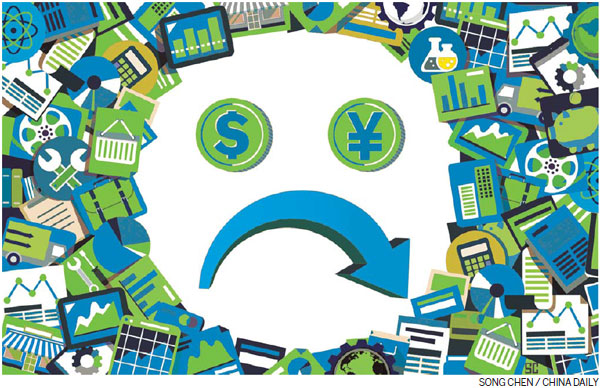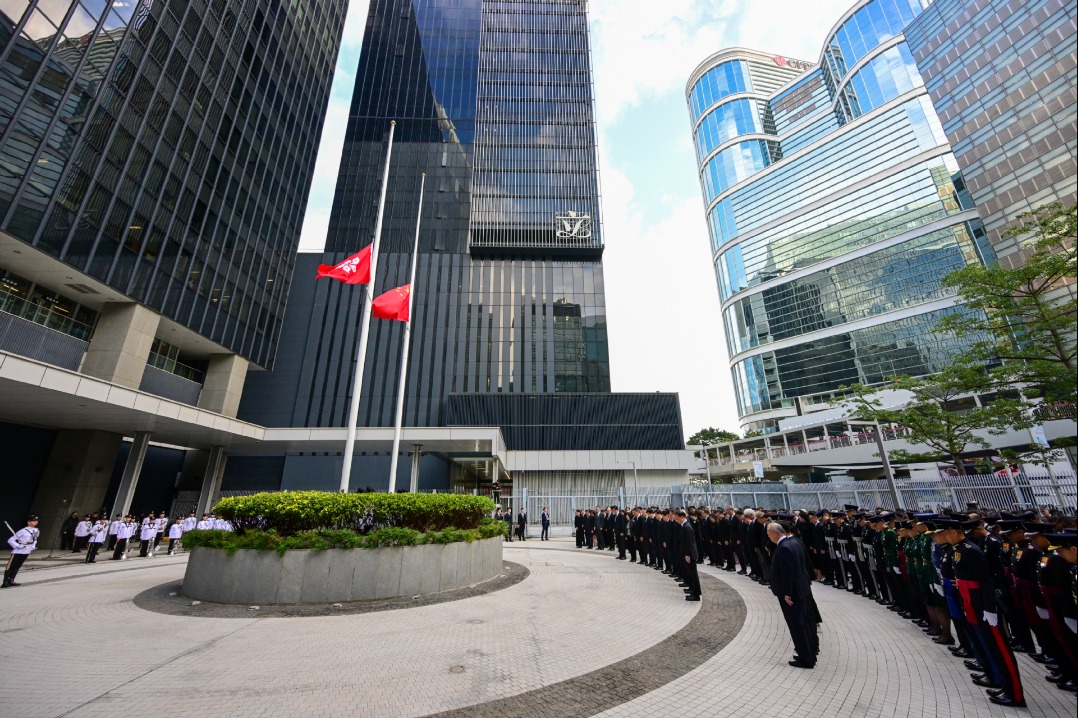5 things to look out for


The Chinese economy has faced some difficult headwinds over the past year but is expected to remain resilient. Andrew Moody and Hu Haiyan look at areas of concern that are at the top of the government agenda
Volatile stock market
The Chinese stock market has made headlines around the world over the last year.

After a year-long bull run, the Shanghai Composite Index peaked at 5,178 in June last year before crashing. It had lost 47.1 percent of its value, closing at 2,741 on Feb 25, when it fell sharply again after a more than three-week rally.
The government has appointed Liu Shiyu, a former deputy governor of the People's Bank of China, the central bank, as head of the China Securities Regulatory Commission, which regulates China's exchanges, to tackle some of the weaknesses in the functioning of the market. He replaces Xiao Gang, who has been in the position for nearly three years.
Apart from cracking down on illegal activities, he will need to address the problems arising from the immaturity of the market.
Some 70 percent of share buyers are small private investors, while the exchanges in Hong Kong, New York and London are dominated by institutions that trade shares with a bigger-picture and better informed outlook.
Before the crash, many investors behaved like gamblers and were borrowing money through margin lending to invest in the market.
Local government debt
Local governments first emerged as a significant problem for the economy in 2011 when China's National Audit Office published a report.

Much of it was an overhang from the government's 4-trillion-yuan ($612 billion, 556 billion euros) stimulus in the wake of the global financial crisis, which encouraged municipalities to invest in infrastructure and other building projects.
The government is determined to overhaul the whole system of local government financing and put an end to the implicit guarantee that if local authorities get into financial difficulty, they will always be bailed out by the central government.
Part of the reform will involve local governments issuing their own bonds.
Although China's official debt is relatively low - 41 percent of GDP in 2014 - there remain concerns of overall debt in the economy.
Seven out of 12 economists in a Bloomberg News survey released on Feb 22 expected China's overall total debt (private as well as public) to keep rising to a peak of 283 percent of GDP by 2019.
Unlike many indebted Western countries, China's debt, however, is largely owed internally, making it less vulnerable to external pressures.
State-owned enterprises
The inefficiency of China's state-owned enterprises is a drag on economic growth prospects.

According to Gravekal Dragonomics, a Beijing-based economic research company, they had a rate of return on assets in 2014 of 4.6 percent, almost half that of the 9.1 percent of the private sector.
The government is set to unveil its Five-Year Plan (2016-20), expected to be one of the biggest shake-ups of the sector since former premier Zhu Rongji's reforms of the 1990s.
It particularly wants to tackle the so-called zombie companies, the worst performing of the whole sector.
China's SOEs also account for a large part of the debt burden of the overall economy.
The problem for reformers is that the country's 150,000 SOEs are in some of the most important strategic sectors of the economy and therefore also perform a vital role.
Those in heavy industries are also largely centered in some of China's poorest areas such the northeast. This also poses a further challenge since major closures could compound existing economic problems.
Currency depreciation
The value of the yuan has been one of the major global concerns about China for more than six months.

The People's Bank of China made an adjustment to the exchange rate mechanism last August that set off sustained speculation against the yuan.
In addition using the foreign exchange reserves to prop up the stock market, the financial authorities also deployed them to preserve the value of the currency.
Since the Spring Festival holiday, the yuan has remained relatively stable against the dollar, closing at 6.53 yuan on Feb 25.
PBOC governor Zhou Xiaochuan said earlier this month he would stand up to international speculators, including billionaire George Soros, trying to destabilize the currency.
"China will not let market sentiment be dominated by these speculative forces," he said.
Two factors that are likely to continue to support the yuan are China's large current account surplus in 2015 and relatively low levels of domestic inflation.
Stabilizing the currency will remain a challenge while China continues to open up its capital markets.
Housing bubble
Whether China has a housing bubble that might burst has been a worry for many years now.

So much of the personal wealth of the Chinese is tied up in property and many have got rich from it. It also drives demand in many sectors of the economy - from steel to home decoration products.
The prices of new homes rose 15.5 percent last year in Shanghai and by 8.3 percent in Beijing, although by just 1.6 percent in a survey of 70 Chinese cities.
The number of unsold homes rose by 11.2 percent nationwide in 2015, according to the National Bureau of Statistics.
The real estate boom has been partly fueled by the huge number of first-time buyers continually coming into the market but this might come to an end as the country's working age population shrinks.
The government, which has continually tried to control the market through regulation, has recently eased policy.
On Feb 2 the financial authorities cut the downpayment required for first-time buyers in cities without purchase limits from 25 to 20 percent.
This followed the move last October when it was reduced from 30 percent - where it had stood since 2010 - to 25 percent.
(China Daily European Weekly 02/26/2016 page8)
Today's Top News
- Takaichi must stop rubbing salt in wounds, retract Taiwan remarks
- Millions vie for civil service jobs
- Chinese landmark trade corridor handles over 5m TEUs
- China holds first national civil service exam since raising eligibility age cap
- Xi's article on CPC self-reform to be published
- Xi stresses improving long-term mechanisms for cyberspace governance






























